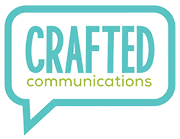Business-to-business (B2B) thought leadership isn’t always the most glamorous and doesn’t garner a ton of fanfare, but it can be one of the most valuable elements of a communications program, if done right. Thought leadership, while a vague term that can be interpreted in many different ways, comes down to using insights and expertise to establish an authentic, forward-thinking voice for a client in their industry. By sharing both innovative thinking and practical advice, brands and their spokespeople can build credibility and become trusted industry thought leaders.
The impact on a brand can be far-reaching – from establishing credibility and trust with a range of stakeholders (partners, customers, employees, media, etc.) and increasing lead generation, to supporting company recruiting and retention and driving media interest.
Here are five considerations when developing a B2B thought leadership program.
Identify the executive bench and be intentional about their platform
After outlining the goals and objectives for a thought leadership program, establish the executives, or subject matter experts, that will be the voice of a program. While it doesn’t have to be the most senior exec, it should be someone credible and knowledgeable who has a deep understanding of the industry to provide valuable, and unique, insights. Things to consider when identifying thought leaders are their communication style, where their passion lies within the industry, willingness to engage, and capacity to contribute consistently to the program.
Content and distribution channels
Next, think through where the brand and executive(s) needs to show up to reach a target audience and map out the appropriate platforms and channels. This can range from the executive’s individual LinkedIn profile to media outlets that accept contributed content or executive profiles and Q&A features. There is also an increasing number of thought leadership publishing platforms available. While Forbes Council is probably the most recognizable, there are newer membership-based platforms such as the Entrepreneur Leadership Network or CNBC’s Technology Executive Council, depending on who your audience is. And don’t forget about the growing value of podcasts.
Once a piece of content is published, promote and extend its reach. This could include posting on the executive’s and brand’s LinkedIn pages, an internal message to employees, and referencing and linking in sales materials and/or partner communications.
Hone your content
Have a kick-off call with the executive(s) to dig into content topics and angles. Take any opportunity to meet with them and listen to any speaking experience they have (i.e. an all-hands meeting, industry event, media briefing, etc.), as the more you hear them talk, the better you can capture the language they use and any nuances in how they speak, as you want the content to be authentic to their voice and help the readers feel connected to them.
Also, review your content and optimize for SEO. Connect with the brand’s internal marketing teams for SEO keyword insights, or take advantage of free SEO tools, such as those from Moz, Google Analytics, SEMRush, and more.
Be consistent, yet nimble
To help maintain a regular communication schedule, develop an editorial calendar of topics for the different channels previously identified. This can be a mix of evergreen topics and those topics related to key milestones such as industry events, company announcements, or seasonal trends within your industry. Remain nimble and change course, as needed, to reflect shifting market trends or to find opportunities in news cycles. Schedule monthly or quarterly meetings with the executive to gather their latest perspectives on what’s happening in the industry.
Be consistent, and commit to the long-term
Building executive thought leadership requires consistent effort and long-term commitment – it’s not a one-time thing, instead it is a continuous process that requires time. Continue to build on your program by exploring complementing speaking and awards programs.
Considering these areas will help you build a strong B2B thought leadership program, helping establish your executive as a go-to resource for media and your brand as a credible organization for potential partners, customers, and employees.

